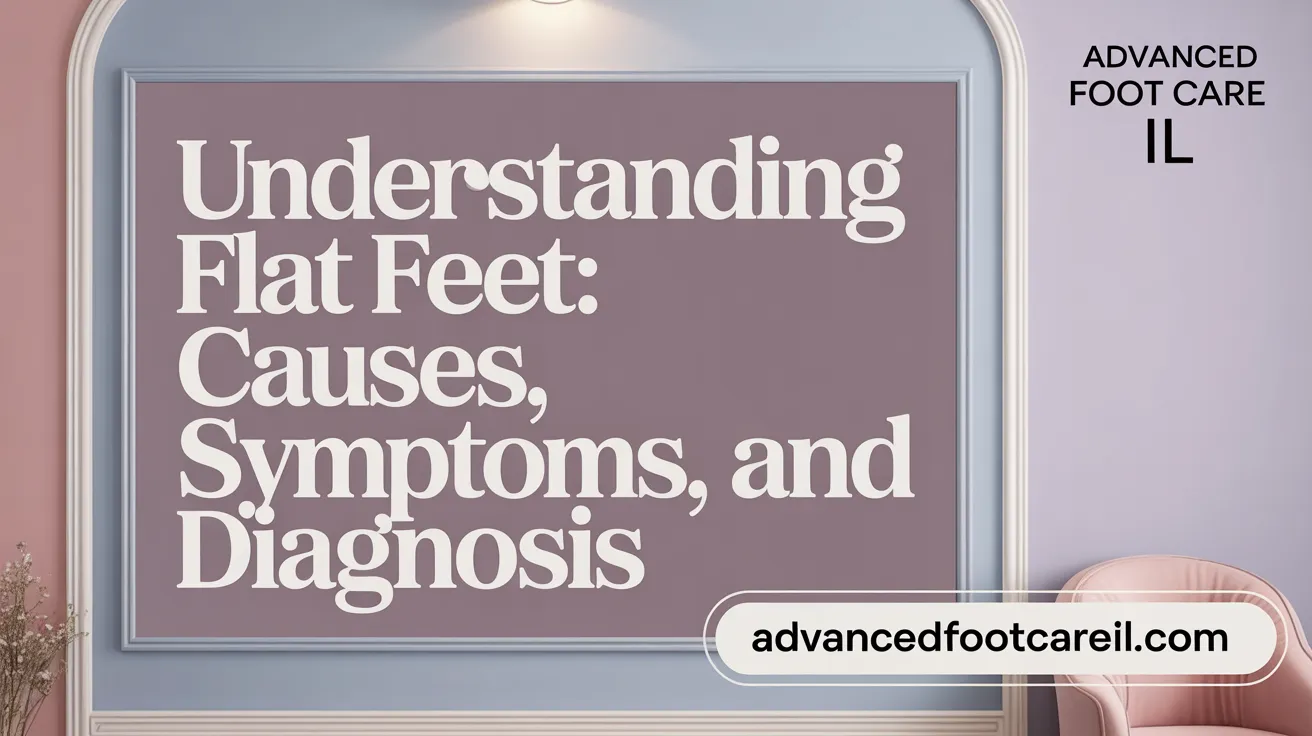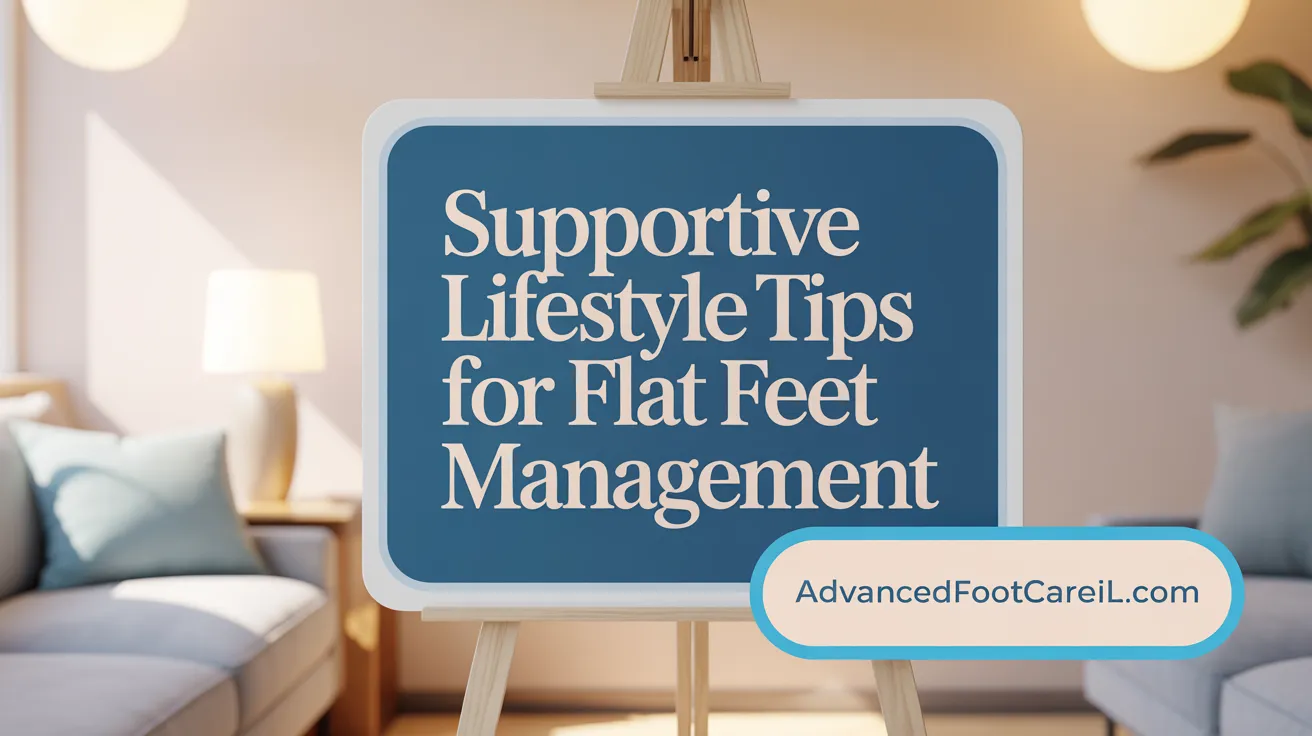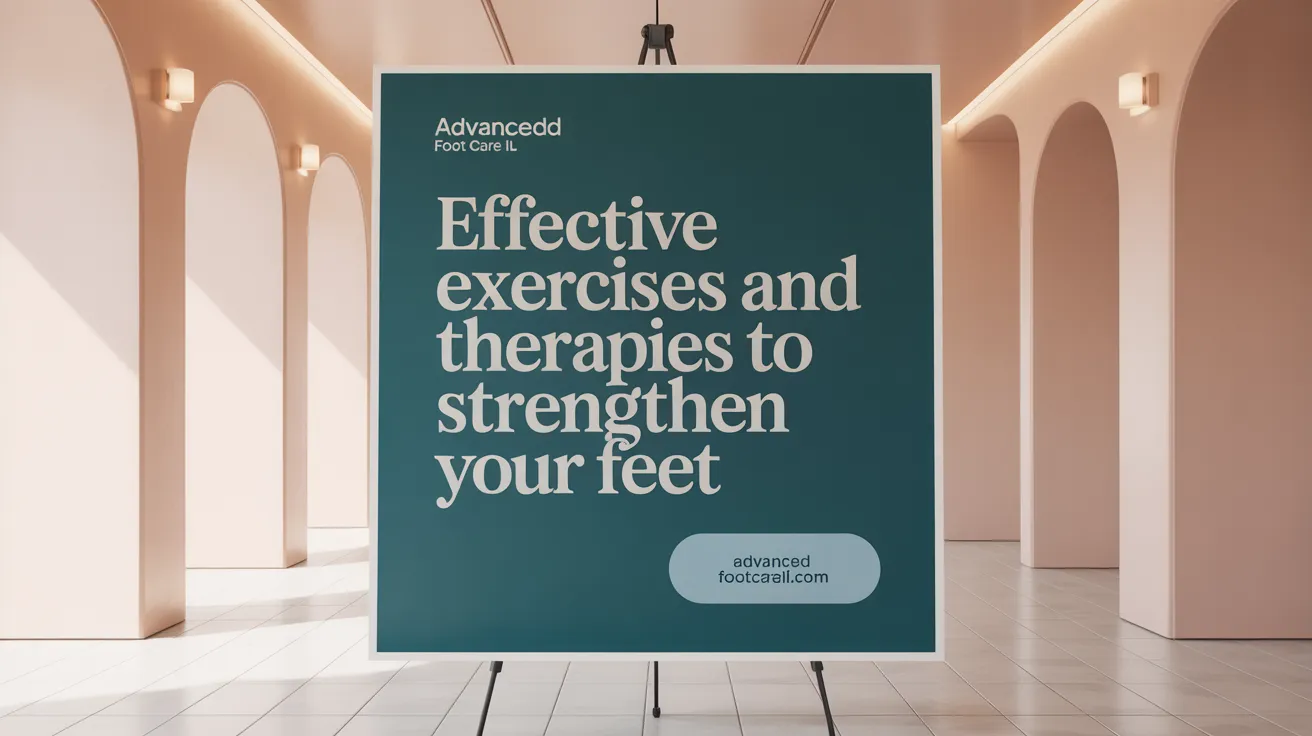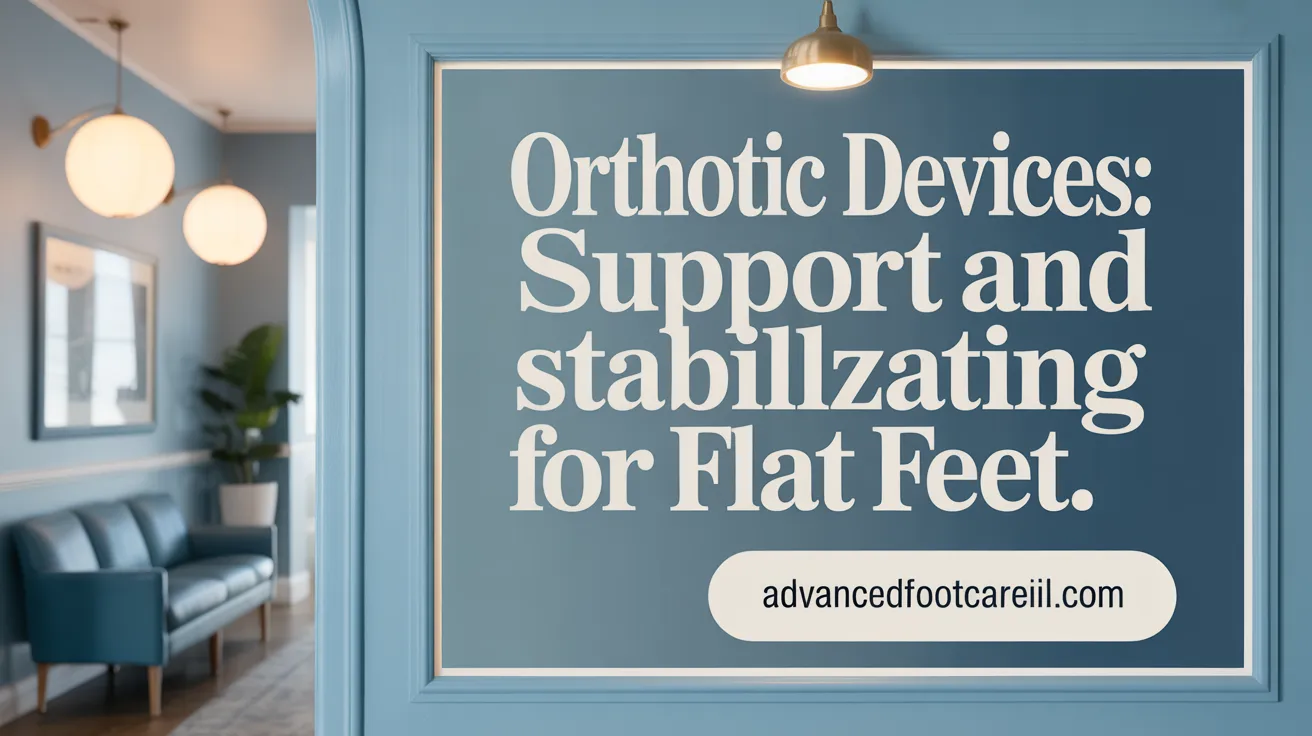Introduction to Flat Feet and Arch Collapse
Flat feet, medically known as pes planus or fallen arches, affect a significant portion of the population. While many experience no symptoms, others may face discomfort, pain, or mobility issues due to arch collapse. This article explores the causes, symptoms, and diagnosis of flat feet, examines treatment strategies ranging from conservative care to surgery, and highlights exercises, orthotic solutions, and lifestyle changes that can improve foot health and function.
Causes, Types, Symptoms, and Diagnosis of Flat Feet and Arch Collapse

What are the causes, symptoms, and diagnosis methods for flat feet and arch collapse?
Flat feet, known medically as pes planus, occur when the arch of the foot either develops abnormally or collapses, causing the sole to touch the ground. This condition can be congenital, meaning present from birth, or acquired due to various factors.
Causes of flat feet include genetic predispositions, where the structures supporting the arch are inherently weak or malformation. Developmental issues during childhood often see most infants and young children with flat feet, which typically resolve as the arches develop by age 7 to 10. However, flat feet can also result from injuries, such as ligament tears or tendinitis—particularly of the posterior tibial tendon that supports the arch. Other contributors include arthritis (like rheumatoid arthritis), nerve and muscle diseases, obesity, aging, and chronic conditions like diabetes.
Many people with flat feet experience symptoms like foot pain, especially after prolonged walking or standing. Swelling, tiredness, and gait abnormalities such as walking on the inside of the foot are common signs. Some individuals also report discomfort extending up to the knees, hips, or lower back due to altered biomechanics.
Diagnosis relies on a physical examination, where a healthcare provider observes the foot’s shape both while standing and when the patient lifts their foot. The clinician tests the range of motion, strength, and the presence of pain or deformity. Noticing whether the arches flatten during standing (flexible flat foot) or remain absent regardless of position (rigid flat foot) helps differentiate the types.
Imaging techniques such as X-rays are frequently used to assess bone structure, joint alignment, and the extent of arch collapse. Advanced imaging like MRI or CT scans can be helpful in complicated cases to evaluate tendons, ligaments, and cartilage. Footwear wear patterns and gait analysis also provide valuable insights.
Treatment varies based on severity and symptoms but often includes conservative methods like orthotics, supportive shoes, stretching exercises for the Achilles tendon and foot muscles, and physical therapy. Surgery remains a last resort for persistent pain, deformity, or functional impairment.
Identifying the underlying cause and extent of flat feet is crucial for effective management and to prevent secondary issues such as joint pain or abnormal gait pattern.
Conservative and Surgical Treatment Options for Flat Feet
 What are the treatment options available for flat feet, including both conservative and surgical procedures?
What are the treatment options available for flat feet, including both conservative and surgical procedures?
For many individuals with flat feet, especially if they experience pain or functional issues, initial treatment typically involves conservative methods. These include the use of custom orthotic devices that support the arch, supportive footwear designed specifically for flat feet, and stretching exercises that target the Achilles tendon and calf muscles. Physiotherapy can help strengthen foot muscles and improve biomechanics, while over-the-counter pain medications such as ibuprofen or naproxen are recommended to manage inflammation and pain.
Lifestyle modifications, like activity adjustments and weight management, also play a vital role in alleviating symptoms. In cases where conservative approaches do not relieve pain or improve foot function, surgical intervention becomes necessary. Surgery is generally indicated for severe symptoms, structural deformities, or when deformities fail to respond to non-invasive treatment.
Common surgical procedures include osteotomies (bone cutting and realignment), tendon transfers, joint fusion surgeries, arthroereisis (implantation of devices to restrict joint movement), and calcaneal osteotomy. The specific procedure depends on the severity and the underlying cause of the flat foot, along with patient age.
Pediatric surgeries often involve procedures like Evans osteotomy and calf muscle lengthening to correct flexible flat feet, whereas adult cases may require more extensive interventions such as calcaneal osteotomy, spring ligament repair, or joint fusion. Postoperative recovery typically involves immobilization, gradual weight-bearing, and physiotherapy, which may extend over several months.
While surgery offers significant correction, it carries risks such as infection, nerve injury, delayed healing, and possible recurrence of deformity. The decision to proceed with surgery involves comprehensive assessment by a podiatrist or orthopedic surgeon, ensuring tailored treatment planning aimed at restoring foot mechanics and alleviating symptoms.
Management Strategies and Lifestyle Adjustments to Support Flat Feet Treatment
 Individuals with flat feet can take various approaches to manage their condition effectively. Supportive footwear plays a crucial role, with shoes designed to provide proper arch support and stability helping to alleviate discomfort and prevent worsening of symptoms. Custom orthotic inserts, tailored to fit the individual's foot structure, offer additional support by redistributing pressure and improving alignment.
Individuals with flat feet can take various approaches to manage their condition effectively. Supportive footwear plays a crucial role, with shoes designed to provide proper arch support and stability helping to alleviate discomfort and prevent worsening of symptoms. Custom orthotic inserts, tailored to fit the individual's foot structure, offer additional support by redistributing pressure and improving alignment.
Maintaining a healthy weight reduces the strain on the arches, lessening pain and decreasing the risk of further damage. When engaging in physical activity, it is advisable to modify or limit high-impact exercises that may exacerbate foot pain, favoring low-impact options such as swimming or cycling.
Regular physical therapy and targeted exercises contribute significantly to strengthening foot muscles and improving flexibility. Exercises like toe curls, heel raises, and Achilles tendon stretches help in maintaining the arch and reducing tension.
Early intervention is vital. Consulting with a foot specialist or podiatrist helps in developing a personalized treatment plan, especially if symptoms progress or persist despite initial management. Routine follow-ups ensure that treatments remain effective and adjustments are made as needed.
Incorporating proper footwear choices and low-impact exercises into daily routines supports long-term foot health. Combining these lifestyle habits with professional care creates a comprehensive approach to managing flat feet and preventing further complications.
Exercises and Therapies to Manage or Correct Flat Feet

Which exercises and therapies are effective in managing or correcting flat feet?
Managing flat feet often requires a combination of targeted exercises, stretches, and supportive devices to improve foot function and alleviate symptoms.
Strengthening exercises play a crucial role in restoring arch support. Heel raises, also known as calf raises, help strengthen the calf muscles and improve the stability of the ankle and foot. Arch lifts, or foot doming exercises, activate the intrinsic muscles of the foot by encouraging the arch to rise during activity.
Towel curls and marble pickups are simple yet effective exercises for enhancing fine motor control and strength in the foot muscles. Short foot exercises involve pulling the arch upward without curling the toes, directly targeting the muscles that support the arch.
Stretching routines are equally important, especially for the Achilles tendon and calf muscles. Tightness in these areas can limit ankle mobility, contributing to flat foot conditions. Regular stretching of the Achilles tendon with dorsiflexion stretches can improve ankle flexibility and support better foot mechanics.
Balance and sensorimotor training are beneficial to enhance stability and proprioception. Exercises on unstable surfaces or using balance boards help train the foot and ankle muscles to respond effectively to different terrains, preventing overuse and injury.
Physiotherapy often complements these exercises through guided sessions that ensure proper technique and progression. Consistency is vital — performing these exercises regularly over several weeks can significantly improve arch height and foot strength.
Supportive devices such as orthotic insoles, custom or over-the-counter, provide additional arch support during daily activities and exercises. Stability shoes designed for flat feet can also bolster the foot’s structural support.
Overall, a comprehensive approach combining exercises, stretches, supportive aids, and professional guidance offers the best chance for managing or correcting flat feet. Surgery remains a last resort for severe cases unresponsive to conservative measures.
Orthotic Solutions and Devices in Flat Feet Treatment

How can orthotic solutions and devices help in the treatment of flat feet?
Orthotic devices are essential tools in managing flat feet effectively. They support the arch of the foot, helping to restore proper alignment and biomechanics. By doing so, they reduce the strain on muscles, tendons, and ligaments that often causes pain, fatigue, and further deformities.
Orthotics can also help control overpronation, which frequently accompanies flat feet, thereby preventing secondary problems like knee, hip, or lower back pain. These supports improve overall foot function, making walking and standing more comfortable.
There are two main types of orthotics: over-the-counter and custom-made. Off-the-shelf orthoses are readily available, affordable, and suitable for mild flat feet, providing basic arch support. However, they may not fit perfectly or address specific structural concerns.
In contrast, custom orthoses are crafted based on a detailed assessment by healthcare professionals like podiatrists. They are tailored to an individual's particular foot shape and underlying issues, offering more precise support. This personalized approach ensures better correction and comfort, especially for complex or severe cases.
Recent technological advances have transformed orthotic fabrication. Methods such as 3D printing and CAD (Computer-Aided Design) processes enable faster production and highly customized solutions. These innovations facilitate precise modeling of the foot’s contours, improving fit and function.
Orthotics are indicated when flat feet cause symptoms such as pain, fatigue, or instability. Using orthoses can prevent the progression of deformities and reduce the risk of secondary conditions.
Often, orthotics are combined with other therapies, including stretching exercises, physiotherapy, or supportive footwear, to enhance overall treatment effectiveness. In some instances, they serve as part of a broader management plan aimed at restoring the foot’s natural arch and improving mobility.
Overall, proper orthotic intervention plays a vital role in alleviating discomfort, correcting biomechanical issues, and supporting a healthy, active lifestyle for individuals with flat feet.
Educational Overview and Preventive Insights on Flat Feet and Related Conditions
What educational information is important to understand about flat feet and associated conditions?
Flat feet, also known as pes planus, are characterized by the absence of a visible arch in the foot when standing. This condition affects a significant portion of the population, with many individuals being asymptomatic. It’s essential to distinguish between different types of flat feet: flexible flat feet, which have an arch when the foot is not bearing weight but flatten upon standing, and rigid flat feet, which lack an arch in all positions. Congenital flat feet are present from birth and may be linked to genetic factors, while acquired flat feet develop later due to injuries, tendons wear-and-tear, arthritis, or aging.
Many children have flat feet as part of normal development, with arches usually forming by age 10. However, if flat feet persist into adulthood and cause pain or gait issues, medical attention becomes necessary. Symptoms can include foot, ankle, knee, or back pain, especially after prolonged activity, or deformities altering gait.
Diagnosis involves physical exams, such as observing the foot's structure while standing and walking, complemented by imaging techniques like X-rays or MRIs to assess bone and tendon health. Treatments for symptomatic flat feet range from conservative methods—including orthotic supports, stretching exercises, physiotherapy, and supportive footwear—to surgical procedures when necessary.
Understanding these aspects of flat feet is vital. It helps individuals recognize when to seek care and adopt management strategies to alleviate pain and prevent secondary problems in the knees, hips, or lower back.
How do biomechanical changes in flat feet affect other joints?
Flat feet can cause biomechanical imbalances that translate upward through the kinetic chain. When the arch collapses, it often leads to overpronation, where the foot rolls inward excessively during walking or running. This abnormal motion can misalign the ankle, knee, and hip joints.
Over time, such misalignments may result in pain, inflammation, or degenerative changes in these joints. Conditions like shin splints, knee soreness, or hip discomfort are common secondary effects. Proper diagnosis and management, including orthotic supports and targeted exercises, can help restore normal biomechanics and reduce strain on these interconnected joints.
What preventive measures can be taken?
While flat feet are often due to anatomical or genetic factors, some preventive steps can reduce symptoms or delay progression. Maintaining a healthy weight decreases stress on the feet, minimizing the risk of pain and joint degeneration.
Wearing supportive shoes with adequate arch support and cushioning helps distribute pressure evenly across the foot. Engaging in stretching and strengthening exercises, especially for the calf muscles and Achilles tendon, can improve foot stability.
Even if flat feet are asymptomatic, these measures support overall foot health and function. Regular check-ups with a podiatrist or orthopedic specialist are recommended if symptoms develop or worsen.
What is the long-term outlook and role of patient education?
Many individuals with flat feet manage their condition successfully through conservative treatments. Educating patients about their foot type, activity modifications, and footwear choices empowers them to make informed decisions.
Understanding that flat feet are often benign and asymptomatic promotes realistic expectations. For symptomatic cases, early intervention can prevent complications like pain, deformities, or secondary joint problems.
Overall, awareness and proactive management play crucial roles in maintaining foot health, reducing discomfort, and ensuring mobility. Patients should be encouraged to seek professional advice if they experience persistent symptoms or functional limitations.
| Aspect | Details | Additional Notes |
|---|---|---|
| Types of Flat Feet | Flexible, Rigid, Congenital, Acquired | Each requires different management approaches |
| Symptoms | Pain (foot, leg, back), Deformities, Gait issues | Often related to biomechanical changes |
| Diagnosis | Physical exam, Imaging, Shoe wear analysis | Accurate diagnosis guides treatment |
| Treatments | Orthotics, exercises, surgery | Conservative options preferred first |
| Prevention | Weight control, supportive footwear, exercises | Limited impact but beneficial |
| Long-term Outlook | Many adapt; symptom management essential | Early treatment improves quality of life |
Conclusion
Flat feet and arch collapse represent a spectrum of conditions that vary in cause, severity, and impact on mobility. While many individuals may not require treatment, symptomatic flat feet benefit greatly from a combination of conservative measures including orthotics, targeted exercises, and lifestyle adjustments. Surgical options are reserved for those with severe deformities or persistent pain unresponsive to non-surgical interventions. Early diagnosis and individualized management plans are crucial to preserving foot function and preventing secondary complications. Through education, proper care, and adherence to treatment strategies, people with flat feet can maintain an active, comfortable lifestyle.
